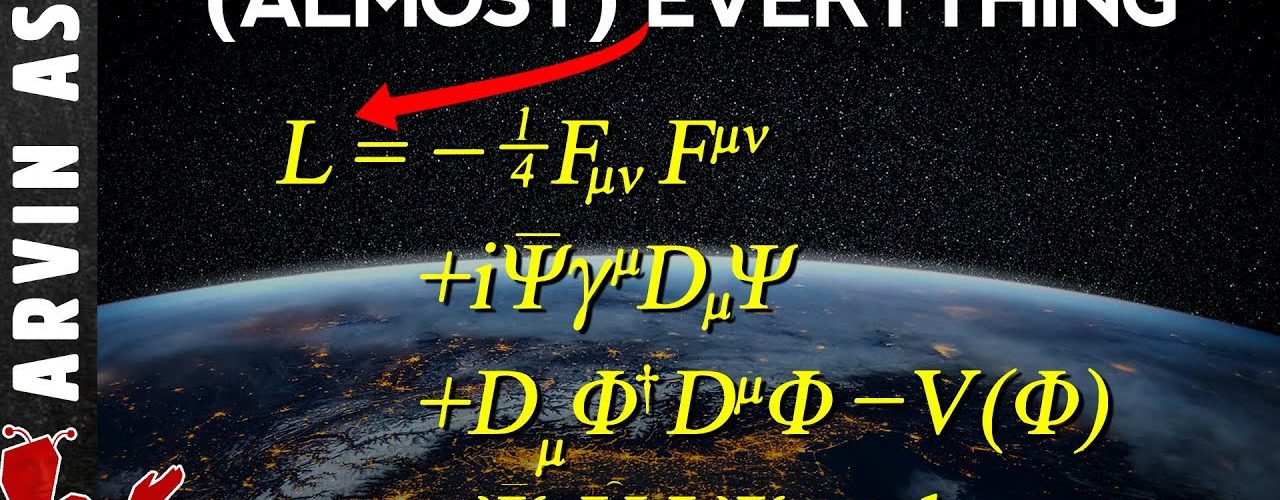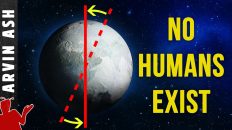The holy grail of physics research is a theory of everything. But we already have a pretty good model for such a theory. It is the Standard model of particle physics. It describes all fundamental particles that we are aware of, and three of the 4 known fundamental forces, electromagnetism, strong, and weak interactions. It just doesn’t include gravity.
The simple equation and chart actually represents very complex mathematical equations that can take years of graduate level study to fully understand. It was developed by hundreds of scientists over several decades. In this video, I explain the math intuitively.
0:00 – The best known theory
2:00 – The Standard Model explained
4:05 – What is a Lagrangian
5:01 – How forces interact
6:52 – How matter interacts with forces
9:32 – Higgs-boson interactions
11:25 – Higgs-matter interactions
13:23 – Summary
Ordinary matter that we experience around us is really just made of 4 particles, the up and down quarks which make up the protons and neutrons in the nuclei of atoms, electrons which form a cloud around the nucleus, and a near massless particle – the electron neutrino which is created during the fusion process in stars like the sun. The other particles are rare and don’t typically exist in ordinary matter.
The difference between quarks and leptons is that quarks interact with the strong nuclear force which binds the nuclei of atoms together, whereas leptons do not. The Bosons are the force carriers. The gluons carry the strong force which binds the nuclei of atoms. The W plus, W minus and Z boson carry the weak force which is responsible for some kinds of radiation. And the photons carry the electromagnetic force responsible for all electricity, magnetism and chemistry.
Lastly, we have the Higgs boson which is important for giving mass to all fundamental particles.
A Lagrangian is just like the sum of all energies. The entire universe can be represented by the mathematics that accounts for energy. The standard model is a quantum field theory. This means that particles are an excitation in a quantum field. It is not like a tiny marble. It is like tiny waves.
The first term is composed of two matrices F sub mu nu, and F superscript mu nu. This term represents all the ways that all the force carrying particles, the bosons interact with each other. Only the Higgs in not included in this term.
The next term in the simple Lagrangian refers to the fermion fields and their interaction with the gauge fields. Simply put, it describes how matter interacts with forces. There is a factor i in these terms. This is the imaginary number defined as the square root of minus one. It is a mathematical tool that allow the use of more numbers so we are not constrained to only the simple real numbers. This is allowed in physics as long as your final result representing physical values does not contain it.
Particles have a property where they are either right-handed or left-handed. Right handed means that the spin of the particle is in the same direction as the motion of the particle. Left handed means that the spin is in the opposite direction of motion. This is important for leptons because it turns out that only left-handed neutrinos exist. But, electrons and its heavier cousins the Muon and Tau particle, can be both left or right-handed.
The next two terms describe how the force-carrying particles interact with the Higgs field and how the Higgs interacts with itself. Higgs is the only field in the standard model that has a potential. The potential is what is responsible for giving mass.
The subscripts R and L, again refer to the left and right-handed particles. The Y (gamma) represents the Yukawa couplings of each particle to the Higgs field – The stronger the coupling, the higher the mass that the particle acquires.
Finally, the last term is this h.c. terms and that just means Hermitian conjugate. While the prior term describes the interaction between a Higgs particle and matter particles, this describes the same interaction with antimatter particles. We have to take the antimatter particles into account in this Lagrangian because they also exist.
This equation is describes what almost all the universe it made of, as we understand it. The first term is how all the quantum forces of the universe interact with each other. The second term is how matter interacts with all the forces. The third term is how force particles gain mass. The fourth term is how the Higgs interacts with itself. The fifth and sixth terms describe are how the matter and antimatter particles gain mass.
#standardmodel
#standardmodellagrangian
#theoryofeverything
Although this is the best and closest thing we have to a theory of everything, it has some gaps, gravity, dark matter and Dark energy is not in this model. So there is plenty of work to be done.







